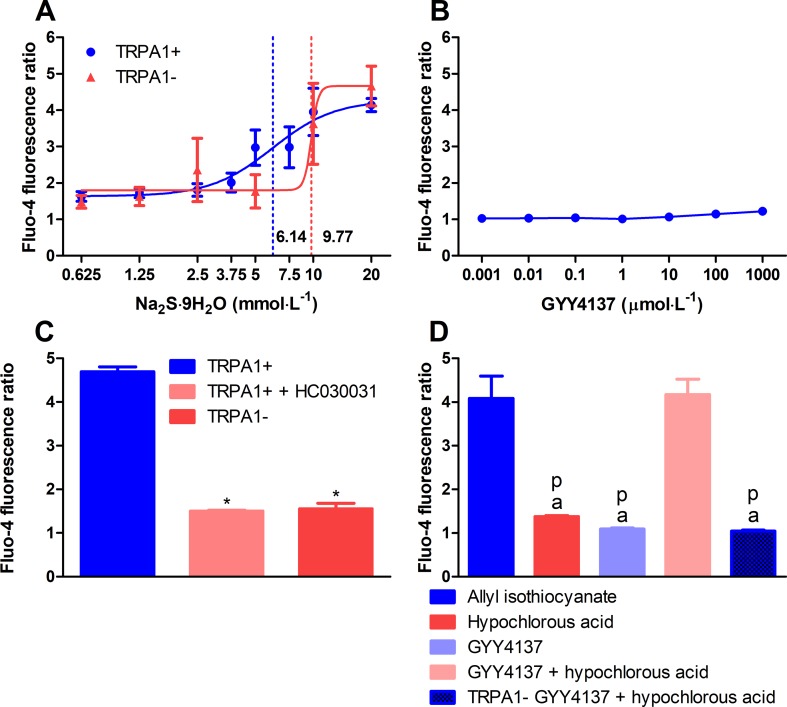Figure 2.
Polysulfide produced by hypochlorous acid out of sulfide released from acidified GYY4137 activates TRPA1 ion channels in CHO cells. (A) Sodium sulfide nonahydrate did not activate human TRPA1 ion channels expressed in CHO cells at physiological concentrations indicated by Fluo-4 AM fluorescence. EC50 values of TRPA1-expressing and non-expressing cells were 7.68 and 9.87 mmol L−1, respectively (n = 5–7, dotted lines show EC50 values). (B) GYY4137 did not elicit calcium influx in TRPA1-expressing CHO cells (n = 5). (C) Changes of [Ca2+]i of Fluo-4 AM-loaded CHO cells expressing human TRPA1 ion channels upon addition of sodium polysulfide (10 μmol L−1). Ca2+ concentration is characterized by increased fluorescence compared with dye-loaded unstimulated cells. Cell expressing human TRPA1 showed increased Ca2+ concentration in response to polysulfide. The reaction was prevented by treatment with HC-030031 (50 μmol L −1) and lack of TRPA1 channels (n = 12, each data point represents 104 cells. *p < 0.05vs. 10μmol L−1 of sodium polysulfide in TRPA1-expressing CHO cells). (D) Polysulfide produced by adding hypochlorous acid (616 μmol L−1) to acidified GYY4137 (7.95 mmol L−1 of GYY4137 plus equal volume of 1 mmol L−1 of hydrochloric acid) activates human TRPA1 ion channels expressed in CHO cells similarly to allyl isothiocyanate (100 μmol L −1). Calcium influx was not detected in cells lacking the ion channel. Neither acidified GYY4137 nor hypochlorous acid alone induced calcium signals (n = 5–8, a p < 0.05 vs. 100 μmol L −1 of allyl isothiocyanate, p p < 0.05 vs. acidified GYY4137 mixed with hypochlorous acid).

